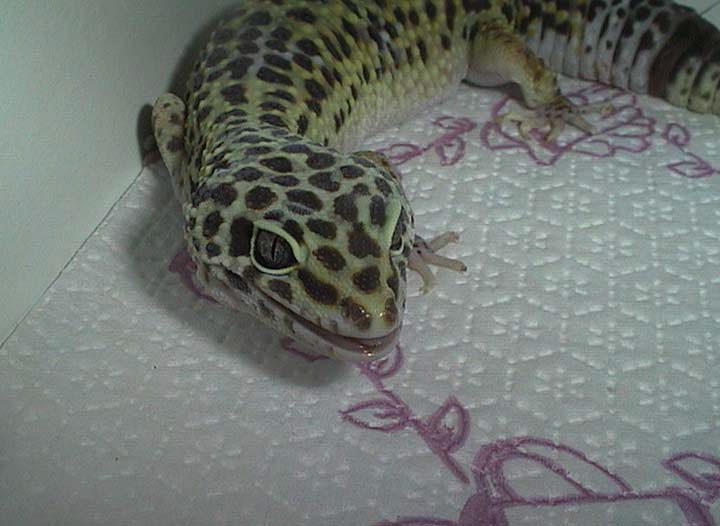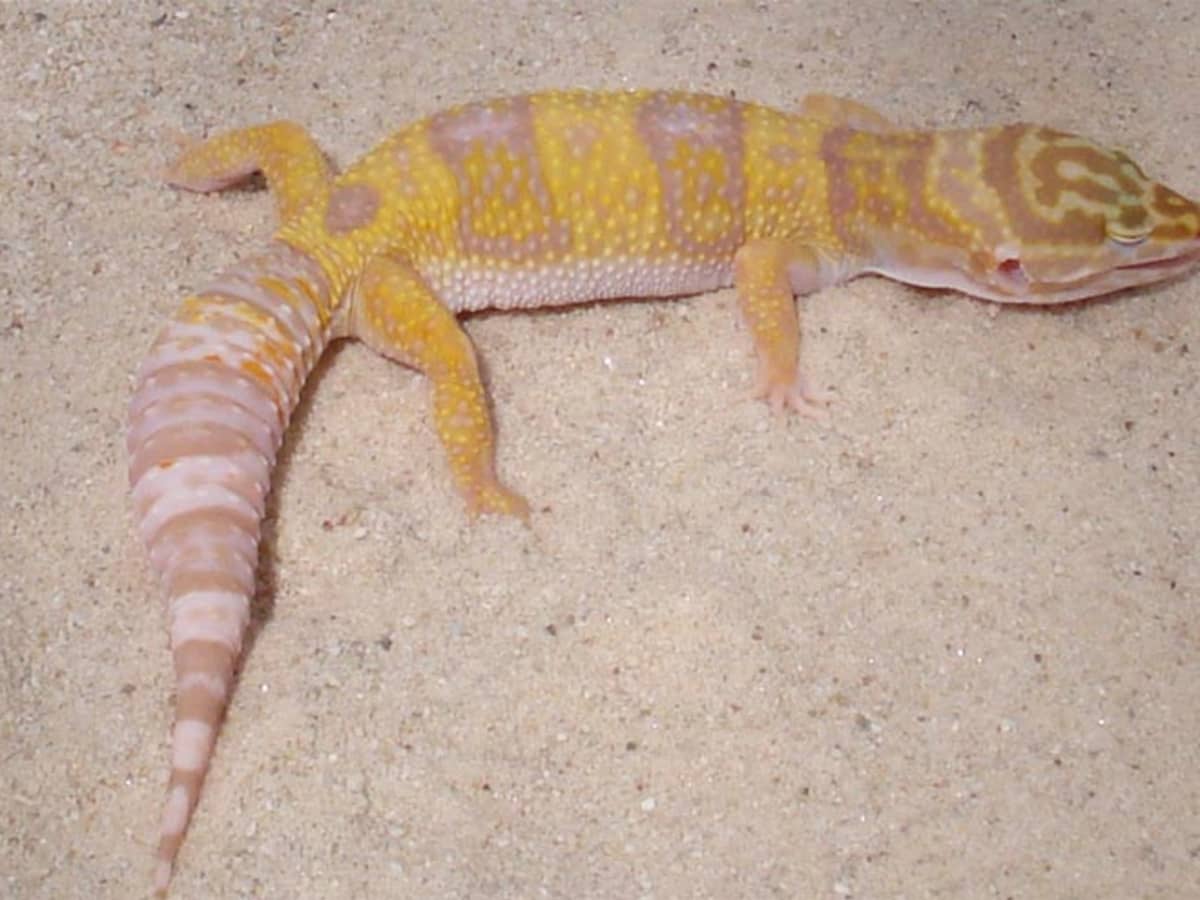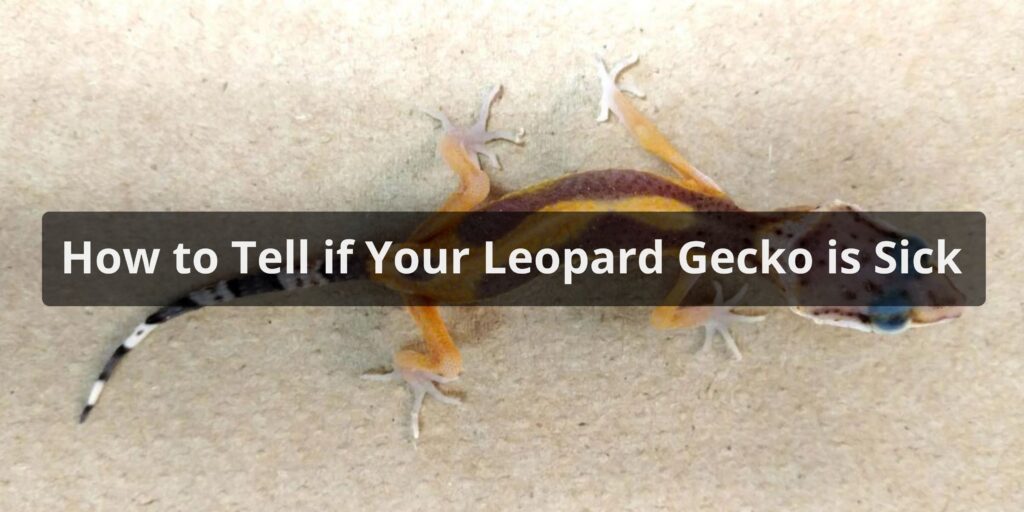Leopard geckos make great pets for beginner and experienced reptile owners alike. They are generally quite hardy and don’t require a lot of advanced care. However, like any animal, leopard geckos can sometimes get sick. Knowing the signs of illness and getting veterinary care when needed is important for keeping your leopard gecko healthy and happy. Here’s what you need to know how to tell if your leopard gecko is sick about recognizing and responding:
Changes in Appearance and Behavior
Some of the most telling signs that a leopard gecko is under the weather are changes in its appearance and behavior. Here are some things to look out for:
- Lack of appetite or interest in food
- Lethargy, moving less than usual
- Hiding more often
- Darkening of the skin
- Shedding difficulties
- Swollen or closed eyes
- Weight loss
- Tail thinning
- Changes in urination or stool
Any deviation from your gecko’s normal habits or looks could signal a health issue. Make sure to observe your pet carefully each day so you can detect problems early on.
Potential Illnesses and Health Conditions

There are a variety of health conditions that may affect leopard geckos. Here are some of the most common:
Respiratory Infections
Respiratory infections are fairly prevalent in leopard geckos. Symptoms include labored breathing, mucus in the mouth or nose, and wheezing. This is often the result of poor humidity or temperatures that are too cool. Seek veterinary assistance for evaluation and treatment with antibiotics.
Mouth Rot
Mouth rot is a bacterial infection that causes pus and dead tissue to form in the mouth. It leads to symptoms like bad breath, loss of appetite, and swelling. Mouth rot requires prescription antibiotics and antifungal medication.
Parasites
Intestinal parasites like coccidia, pinworms, and tapeworms can infect leopard geckos, usually due to ingestion of contaminated prey or poor sanitation. Diarrhea, vomiting, and weight loss are common symptoms. Parasites are treatable with dewormers and proper husbandry adjustments.
Metabolic Bone Disease
Metabolic bone disease is caused by an imbalance of vitamins D3 and calcium. It leads to softened and deformed bones. Signs include twitching, rubbery legs, and jaw swelling. Proper supplements and UV lighting help prevent this.
Tail Rot
Tail rot results from a serious infection or injury to the tail. The tail tissue starts dying and will fall off without treatment. Improve husbandry and hygiene to resolve mild cases. Severe infections require antibiotics and amputation.
When to See the Vet

It’s a good idea to make an appointment with an exotic vet if your leopard gecko is displaying any abnormal signs of illness for more than 2-3 days. Even if symptoms seem mild, it is important to have any health issues checked out professionally rather than trying to treat things yourself without knowing the exact cause.
Some signs that require emergency vet care include:
- Difficulty breathing
- Extreme lethargy
- Loss of appetite for more than 5 days
- Obvious wounds or trauma
- Uncontrolled bleeding
- Sudden paralysis
- Vomiting
- Diarrhea lasting over 48 hours
Searching for an experienced exotic vet before your leopard gecko gets sick is recommended. This establishes a relationship and ensures you have someone to call when problems arise. It’s much better to be prepared and proactive.
Providing the Best Care

While illnesses cannot always be avoided, providing excellent care is the best way to keep your leopard gecko healthy. Here are some tips:
- Maintain proper temperatures in the tank with an under tank heater and overhead heating bulb. Ideal is 70-80 F on the cool side and 88-92 F on the warm side.
- Keep the humidity around 40-60%. Monitor this with a hygrometer. Provide humid hides as needed.
- Use appropriate substrates like paper towels, reptile carpets, or tiles. Avoid loose particles like sand.
- Clean the habitat at least once a week by spot cleaning droppings and wiping surfaces. Do a deep clean monthly.
- Feed a balanced diet of insects like crickets, mealworms, dubia roaches, etc. Coat with calcium + D3 supplements. Offer fresh water.
- Allow time outside the tank to explore supervised weekly. Be sure the room is gecko-proofed first.
- Quarantine new geckos for at least 30 days before introducing them to other pets.
- Schedule annual wellness exams with a vet even when your gecko seems healthy.
Following proper care guidelines carefully makes a big difference in keeping your leopard gecko healthy and thriving. Be observant of its condition daily, respond quickly to any changes, and partner with an exotic vet for the best outcomes.
Conclusion
Leopard geckos are fairly hardy pets, but they can develop illnesses just like any animal. As an owner, being able to recognize signs of sickness and obtain qualified veterinary assistance is crucial. With attentive care and husbandry, plus prompt treatment when required, leopard geckos can live a long and healthy life in captivity. Getting to know your individual gecko’s normal behavior and appearance makes it easier to detect subtle changes that could indicate illness. Don’t hesitate to reach out to an exotic pet veterinarian at the first signs of trouble – it’s always better to be safe than sorry with your leopard gecko’s health.
FAQs About How to Tell If Your Leopard Gecko Is Sick
Are there visual cues to identify skin or eye issues?
Visual cues for skin or eye issues in leopard geckos include changes in skin color, blisters, or lumps. Eye problems might manifest as cloudiness, discharge, or swelling. Always inspect their skin and eyes regularly, as these signs can indicate underlying health concerns requiring attention.
What is the significance of unusual posture or movement?
Unusual posture or movement in a leopard gecko, such as lethargy, dragging limbs, or tilting the head, may indicate illness or injury. It’s a clear signal that something is wrong. Promptly consult a reptile veterinarian to diagnose and address the issue, as delayed treatment can worsen the condition.
Can environmental factors contribute to gecko illnesses?
Yes, environmental factors can impact a gecko’s health. Inappropriate temperature, humidity, or enclosure cleanliness can lead to illnesses. Ensure that your gecko’s habitat is properly maintained and meets their specific requirements to minimize the risk of environmental stressors contributing to health problems.
How do I handle and care for a sick leopard gecko?
Handling a sick leopard gecko should be gentle and minimal to reduce stress. Isolate the sick gecko in a separate enclosure with appropriate temperature and humidity levels. Offer supportive care, including maintaining hydration, providing easily digestible food, and ensuring a clean environment. Consult a reptile veterinarian for a proper diagnosis and treatment plan.
When should I seek professional veterinary help?
If you suspect your leopard gecko is sick or notice any abnormal behavior or physical symptoms, it’s crucial to seek professional veterinary help promptly. Early intervention can improve the chances of successful treatment. A qualified reptile veterinarian can diagnose the issue and provide the necessary care and medication for your gecko’s recovery.



